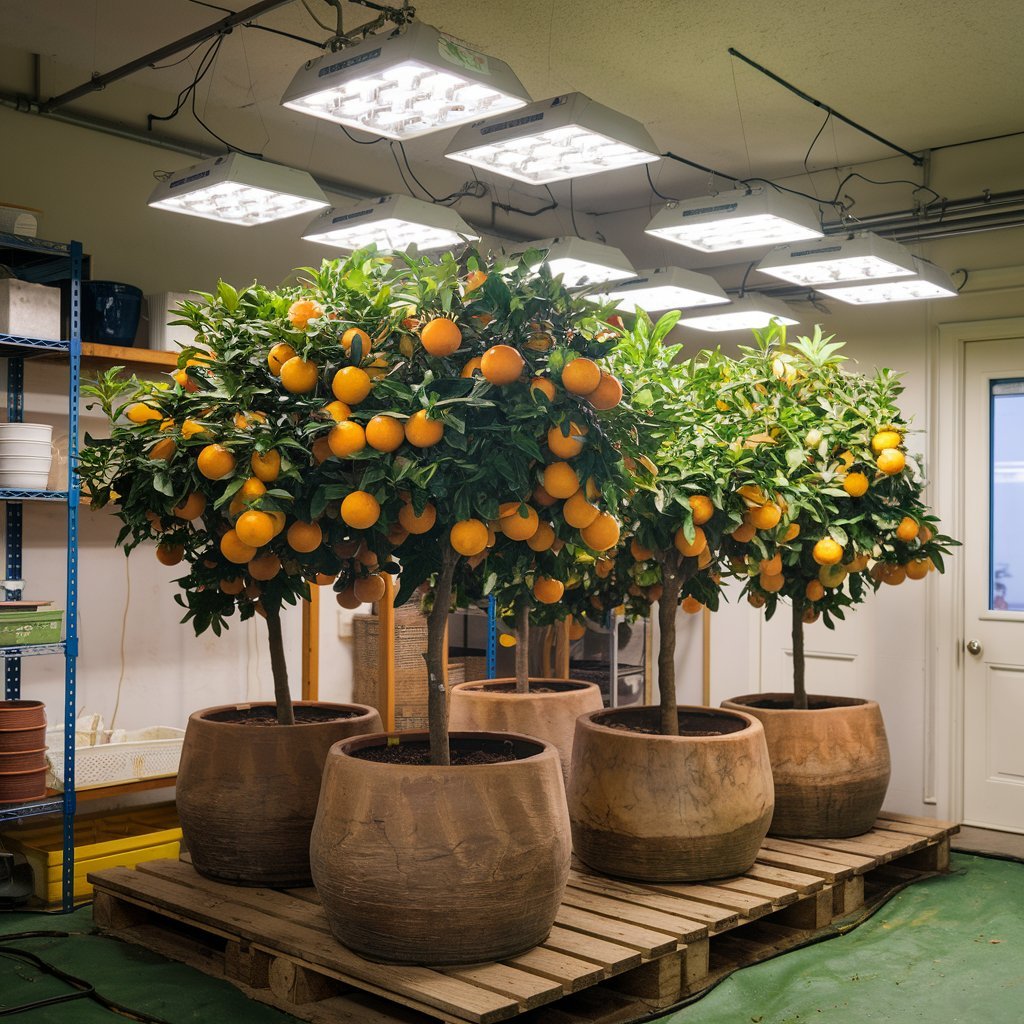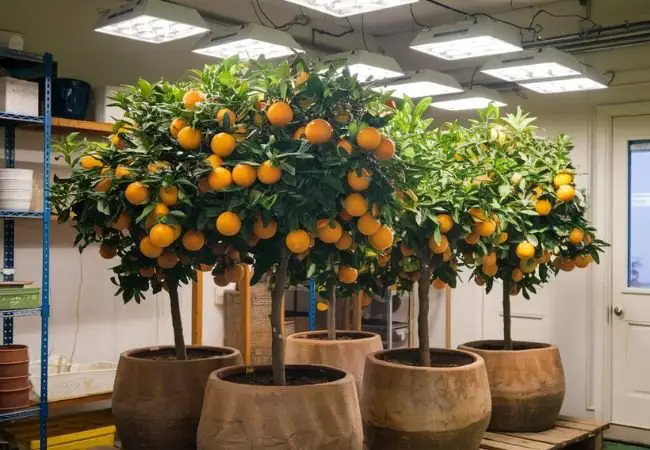Discover how to successfully grow orange trees indoors using grow lights. Learn about light requirements, best practices and expert tips for nurturing thriving citrus trees in any climate.
Have you ever dreamed of plucking fresh oranges from your own tree, even if you don’t live in a tropical paradise? With the right setup and knowledge, you can grow orange trees indoors using grow lights. As someone who has successfully nurtured citrus trees under artificial light for years, I’m excited to share my expertise with you.
Here’s a detailed chart for orange trees:
| Category | Information |
|---|---|
| Botanical Name | Citrus sinensis (Sweet Orange) |
| Common Name | Orange Tree |
| Plant Type | Evergreen tree |
| Hardiness Zone | 9-11 (can tolerate lower zones with protection or as potted plants indoors) |
| Sun Exposure | Full sun |
| Soil Type | Well-drained, sandy or loamy soil |
| Watering | Moderate, regular watering; avoid overwatering but don’t let the soil completely dry out |
| Growth Habit | Upright, bushy |
| Height/Spread | 15-30 feet tall; 15-20 feet wide (dwarf varieties are smaller) |
| Special Features | Fragrant blossoms, edible fruit, attracts pollinators; can be grown in containers as dwarf varieties |
Why Grow Orange Trees Indoors?

Growing orange trees indoors allows you to:
- Enjoy fresh citrus year-round
- Grow tropical plants in any climate
- Control growing conditions for optimal health
Let’s dive into the essentials of growing orange trees under grow lights.
Light Requirements: The Key to Success
Orange trees need high-intensity light for 12-16 hours daily to thrive indoors. This mimics the long, sunny days they enjoy in nature.
Here’s what you need to know:
Intensity
For healthy growth, aim for:
- 30-40 watts per square foot with LED grow lights
- 60-80 watts per square foot with fluorescent lights
Duration
Provide 12-16 hours of light each day. I use a timer to ensure consistent lighting, which is crucial for the tree’s growth cycle.
Spectrum
Use full-spectrum grow lights that include:
- Blue light (400-500 nm) for leaf and stem growth
- Red light (600-700 nm) to encourage flowering and fruiting
Pro Tip: I’ve found that LED grow lights with adjustable spectrums work best, allowing you to tailor the light to your tree’s current growth stage.
For more detailed information on citrus light requirements, check out the University of Florida Extension’s guide on citrus culture.
Best Practices for Growing Orange Trees Under Lights
After years of trial and error, here are my top tips for success:
- Position lights correctly: Place grow lights 6-12 inches above the tree canopy. Adjust height as the tree grows.
- Rotate regularly: Turn your tree a quarter turn weekly to ensure even light distribution and balanced growth.
- Supplement with natural light: If possible, place your tree near a sunny window to complement the grow lights.
- Monitor and adjust: As your tree matures, you may need to increase light intensity or duration.
Additional Care Tips for Indoor Orange Trees
While proper lighting is crucial, other factors contribute to a healthy indoor orange tree:
- Temperature: Maintain a range of 55-85°F (13-29°C). I use a small space heater in winter to prevent cold damage.
- Humidity: Aim for 50-60% humidity. A humidifier or pebble tray can help in dry environments.
- Soil: Use well-draining potting soil specifically formulated for citrus trees.
- Watering: Consistent moisture is key, but avoid waterlogging. I check soil moisture with my finger and water when the top inch feels dry.
- Fertilization: Feed with a balanced, slow-release fertilizer formulated for citrus trees. Follow package instructions for frequency.
For more in-depth information on citrus tree care, the Clemson Cooperative Extension offers excellent resources.
Challenges and Solutions
Growing orange trees indoors isn’t without its challenges.
Here are some common issues I’ve encountered and how to address them:
- Leaf drop: Often caused by sudden changes in environment. Ensure consistent care and avoid drafts.
- Pest infestations: Regularly inspect for pests like spider mites or scale insects. Treat promptly with insecticidal soap or neem oil.
- Lack of flowering/fruiting: This can be due to insufficient light or improper fertilization. Adjust your grow light setup and feeding schedule accordingly.
Growing orange trees under grow lights is a rewarding experience that brings a touch of the tropics to any home. With the right setup, consistent care, and a bit of patience, you can enjoy the beauty and fruits of your own indoor orange tree.
Remember, every tree is unique, and it may take some time to find the perfect balance for your specific situation. Don’t be discouraged if you don’t see immediate results – growing citrus indoors is a journey, not a sprint.
Have you tried growing citrus trees indoors? Share your experiences or questions in the comments below. Happy growing!
For more gardening tips and plant care guides, visit usagardenhub.com.






One comment on “Growing Orange Trees Under Grow Lights : A Complete Guide for Indoor Citrus Success”